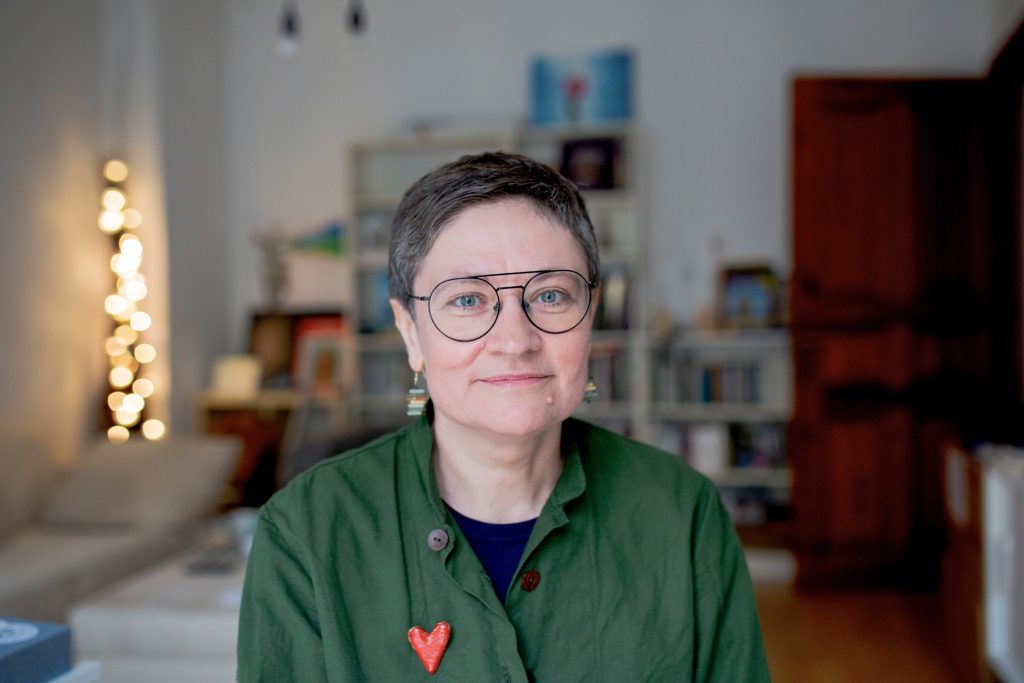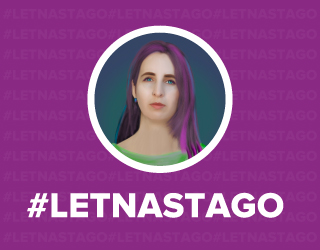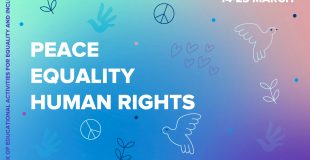Can a conversation about society’s path to human rights and the definition of human dignity give strength in today’s circumstances and help us find resources? Philosopher Olga Shparaga believes it can. She talked about this and about how notions of freedom, equality and justice help us reflect on ourselves at an online lecture as part of the week of educational activities “Peace. Equality. Human Rights.”

The Great French Revolution gave rise to a new ideological context
Events in France in 1789-1799 led to the emergence of the Declaration of the Rights of the Man and of the Citizen. Together with the American Bill of Rights, this document was the most important step toward a modern understanding of human rights. Ideas of rights and freedoms were given legal form. Before that time, individual rights and political rights had not been set forth in documents that were part of national legislation.
The declaration lists citizens as subjects of rights and begins to determine for themselves how to live their lives in the political and economic spheres. Previously, this was done by the monarch, simply by letting down rules and codes from above. Now the citizen has the freedoms and rights to determine how to live in the state. The struggle for a republic continues to this day. People in different forms defend their right to determine the laws under which they want to live. There are obstacles to this in different countries, autocracies arise that want to prohibit this possibility.
The Declaration of the Rights of Man and the Citizen declared that people are born and remain free and equal in their rights. It also enshrined freedom of speech, press, religion, and abolished estates and titles.
On the eve of the French Revolution, philosophers and intellectuals were creating a new ideological context of freedom, equality and fraternity. It retains its significance today, although it is defined in different ways. For example, one of the modern versions of the famous slogan is “Liberty. Equality. Sisterhood.” The concept of the development of human rights, which began then, eventually led to the framing of the Universal Declaration of Human Rights, adopted in 1948.
Olga Shparaga also offers a critical look at the document and notes that each of these concepts had its own limitations. For example, fraternity involved men supporting each other. The fundamental rights claimed by the declaration were denied to women.
Why the need for the concept of “human dignity” has arisen
For the Universal Declaration of Human Rights, the concept of human dignity plays a very important role. But it appeared much earlier than the document itself. The philosopher Immanuel Kant was the first to speak of human dignity in his works.
The idea of the Great French Revolution was that the citizen is now the sovereign. Through various political bodies he asserts his rights, decides how and by what laws to live. For the people themselves to be lawmakers, there must be a source of power to refer to. This source makes it possible not to explain every time what freedom is, why equality and solidarity are important.
People are capable of making laws. To do so, they need to fight for their freedom, stand up for equality, and help each other. It was in this context that the first conversations about human dignity took place. It turned out to be the link for the idea of equality and society. People can and should draw strength from themselves, from helping one another. How to draw? By respecting one’s own and each other’s identity.
No person should be seen as a means for achieving certain goals. All people must be seen as goals for themselves as well as for others. No one can take advantage of others by suppressing and subjugating them, turning them into means and objects. Otherwise it would be an affront to human dignity.
In defining human dignity it is also important that people understand themselves from the perspective of inner integral value. It is in this understanding of ourselves that one can draw strength to act, to respect one another, and to be in solidarity.
What Happens to Human Dignity and Human Rights in a Situation of Revolution or War
One of the key authors who began to redefine the understanding of human dignity and human rights in the twentieth century was Hannah Arendt. She believed that the age of wars requires humanity to reflect on key concepts and take a fresh look at human rights. The writer dedicated her books “The Origins of Totalitarianism” and “Banality of Evil” to this.
The tragedy of the Jewish people during World War II showed that people can find themselves in a situation where it becomes extremely difficult to defend their human dignity. There are also totalitarian states that are built on turning people into objects and tools to achieve their goals. What happens to human rights in these situations? The world is faced with the paradox of human rights and their concept has collapsed. The paradox of human dignity has occurred.
At the beginning of the XX century, during World War I and the interwar period before World War II, many empires collapsed. New small states began to emerge in which the citizens were members of the titular nationalities. This is how minorities came into being. Minorities became stateless and eventually superfluous and ended up in concentration camps. When minorities looked for opportunities to live in other states and could not find them, human rights should have worked. But they didn’t. Human rights were supposed to protect people as human beings, not as citizens of some country. But then they failed because there were no people standing up to protect them. Neither the League of Nations nor the Minority Treaty fulfilled that role. New practices, mechanisms, and institutions were needed to really protect human rights.
An important step toward overcoming the paradox of human dignity was the adoption of the Universal Declaration of Human Rights in 1948. Read more about the history of the writing of the Universal Declaration at this link.
Laws, mechanisms, practices, and institutions have emerged that have begun to protect human dignity and human rights. But this does not change the fact that human dignity remains fragile. Because people are fragile creatures.
Modern philosophers are moving from the notion of human dignity to the notion of a life of dignity. A change in the understanding of this fundamental term leads to a new view of freedom and equality. It is necessary to ensure that both human dignity and freedoms are available to all citizens. That human rights are not infringed upon by all people. That human rights be respected by all people.
The concepts of freedom, equality, justice and human dignity continue to be debated and concretized. They influence how human rights are protected today, how they are fought for, and in what new documents they find expression. Watch Olga Shparaga’s full lecture on our YouTube channel.




